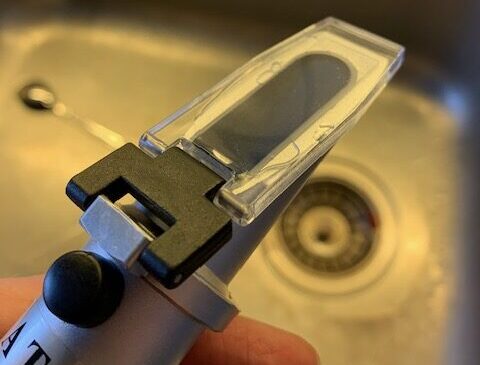Yes, you should cold crash your Hefeweizen, but with caution. Cold crashing is a technique used by homebrewers and professional brewers alike to improve the clarity and stability of beer. While some may argue that a Hefeweizen should be cloudy due to the presence of yeast, there are still benefits to be gained from cold crashing. In this blog post, we will explore the reasons behind cold crashing a Hefeweizen, the potential drawbacks, and how to do it properly.
What is Cold Crashing?
Cold crashing is a process where beer is cooled to near-freezing temperatures in order to encourage the precipitation of suspended particles. By rapidly dropping the temperature of the beer, yeast, proteins, and other particulates are forced to settle out, resulting in a clearer, more stable final product. This process is especially common in the production of lagers, but can also be beneficial for ales, including Hefeweizen.
Why Cold Crash a Hefeweizen?
While it may seem counterintuitive to cold crash a traditionally cloudy style of beer, there are several reasons why one might choose to do so. Here are a few:
Improved Stability
Cold crashing helps to remove excess yeast and proteins from the beer, which can lead to a more stable final product. This means that the beer is less likely to change in flavor or appearance over time, making it a better candidate for aging or cellaring.
Better Clarity
While Hefeweizens are not typically crystal clear, a certain level of clarity can be desirable. Cold crashing can help to achieve this by removing excess yeast and proteins that contribute to haze.
Faster Maturation
The process of cold crashing can actually help to speed up the maturation process of the beer, allowing it to develop its full range of flavors more quickly.
Potential Drawbacks of Cold Crashing a Hefeweizen
As with any brewing technique, there are potential drawbacks to cold crashing a Hefeweizen. Here are a few to consider:
Loss of Yeast Character
One of the defining characteristics of a Hefeweizen is the presence of yeast in the finished beer, which contributes to its hazy appearance and unique flavor profile. By cold crashing the beer, you may inadvertently remove too much yeast, leading to a less flavorful final product.
Increased Risk of Oxidation
Cold crashing can increase the risk of oxidation in your beer, as the process can introduce more oxygen into the beer. Oxidation can lead to off-flavors and a shorter shelf life, so it is important to be cautious when cold crashing.
Potential for Chill Haze
While cold crashing can improve clarity, it can also contribute to the formation of chill haze if not done properly. Chill haze is a temporary haze that forms when a beer is chilled and can be unsightly, although it does not typically impact flavor.
How to Cold Crash a Hefeweizen
If you have decided to cold crash your Hefeweizen, here are some tips to help you do it properly:
Choose the Right Temperature
The ideal temperature for cold crashing a Hefeweizen is between 32 and 40 degrees Fahrenheit. This will encourage the precipitation of yeast and proteins without causing the beer to freeze.
Monitor the Duration
Cold crashing a Hefeweizen should be a relatively quick process, lasting no longer than 48 hours. This will help to minimize the risk of oxidation.
Purge with CO2
To further reduce the risk of oxidation, consider purging your fermentation vessel with CO2 before cold crashing. This will help to displace any oxygen present and protect the beer from potential off-flavors.
Use a Fining Agent
If you are concerned about chill haze, consider using a fining agent such as gelatin or isinglass to help clarify the beer. These agents can help to remove proteins that contribute to haze without affecting the flavor of the beer.
Conclusion
In conclusion, cold crashing a Hefeweizen can be beneficial, but it should be done with caution. By following the tips outlined above, you can help to improve the stability, clarity, and maturation of your Hefeweizen without sacrificing its unique yeast character.
Here are 10 key facts about cold crashing Hefeweizens:
1. Cold crashing is a technique used to improve beer clarity and stability.
2. Hefeweizens are traditionally cloudy due to the presence of yeast.
3. Improved stability, better clarity, and faster maturation are benefits of cold crashing a Hefeweizen.
4. Potential drawbacks include loss of yeast character, increased risk of oxidation, and potential for chill haze.
5. The ideal temperature for cold crashing a Hefeweizen is between 32 and 40 degrees Fahrenheit.
6. Cold crashing should last no longer than 48 hours.
7. Purging with CO2 can help to reduce the risk of oxidation.
8. Using a fining agent can help to prevent chill haze.
9. Cold crashing can be done with caution to maintain the unique yeast character of a Hefeweizen.
10. Ultimately, the decision to cold crash a Hefeweizen comes down to personal preference and brewing goals.
Happy brewing!
FAQs
Should Hefeweizen be cold?
Yes, Hefeweizen should be served cold, ideally between 45-50°F (7-10°C). This temperature range enhances the refreshing and fruity flavors of the beer while also minimizing any potential off-flavors that may arise from serving it too warm.
Is cold crash before kegging necessary?
Cold crashing before kegging is not necessary, but it can improve the clarity and stability of the beer by causing yeast and other particles to settle out of suspension.
When should a spunding valve be closed?
A spunding valve should be closed when the desired carbonation level is reached in the beer or when the fermentation process is complete.
When should a spunding valve be set?
A spunding valve should be set when the beer in the fermenter has reached its desired level of carbonation.
Can you cold crash with a spunding valve?
Yes, you can cold crash with a spunding valve. However, it is important to note that the pressure in the fermenter may drop during the cold crash, which could cause the spunding valve to release excess pressure. It is recommended to monitor the pressure during the cold crash and adjust the spunding valve as needed to prevent over-carbonation or under-carbonation of the beer.
Should I cold crash in fermenter or keg?
It is generally recommended to cold crash in the fermenter before transferring to a keg. This allows the sediment to settle out and compact at the bottom of the fermenter, resulting in clearer beer in the keg. Cold crashing in the keg can stir up the sediment and result in cloudy beer.




